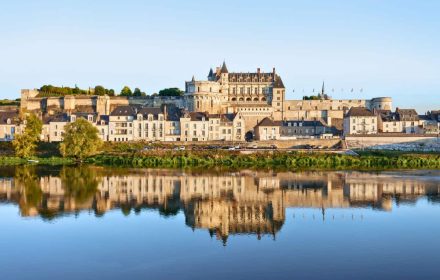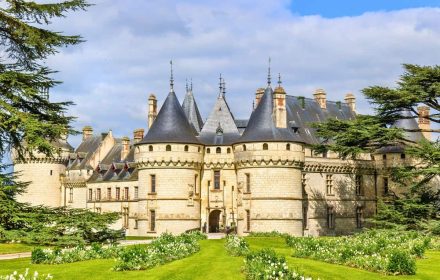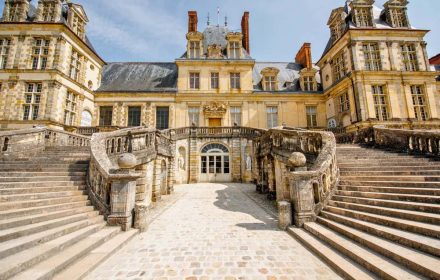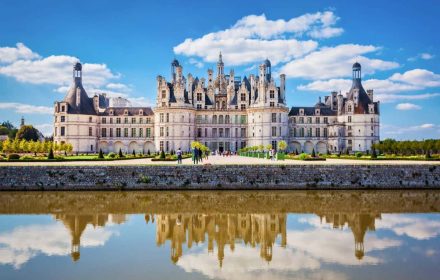This site uses affiliate links, meaning that if you make a purchase through our links, we may earn an affiliate commission.
If you’re planning a trip to the Loire Valley, Château de Villandry is one spot you definitely don’t want to miss.
This 16th-century castle is famous for its incredible Renaissance gardens, which are considered some of the most beautiful in Europe. It’s a UNESCO World Heritage site, and you can really see why since each garden is carefully designed with everything from ornamental flowers to vegetable patches, all in perfect harmony.
The château itself has a rich history, dating back to the 1500s, and it’s been beautifully restored.
So, if you are wondering what to see at Château de Villandry, I’ve gathered them all here, plus a few tips to help you get the most out of your visit. Let’s take a closer look at what makes Villandry so special.
- 1. Brief History of Château de Villandry
- 2. What to See at Château de Villandry
-
- 2.1. The Architecture of Château de Villandry
- 2.2. The Dining Room
- 2.3. The Kitchen
- 2.4. The Main Staircase
- 2.5. Prince Jérôme's Bedroom
- 2.6. Joachim Carvallo's Bedroom
- 2.7. The Moat Bedroom
- 2.8. The Oriental Drawing Room
- 2.9. The Children's Rooms
- 2.10. The ``Potager`` Bedroom
- 2.11. The Keep
- 2.12. The Francis I Room
- 2.13. The Gardens
- 3. Practical Tips for Visiting Château de Villandry
Brief History of Château de Villandry
Château de Villandry was completed in 1536 by Jean Le Breton, who was France’s Minister of Finance under King Francis I.
He built it on the foundations of an older medieval fortress, one where King Philip II of France once met Richard the Lionheart in 1189 to negotiate peace.
While the medieval keep was preserved, the rest of the château was transformed into a classic example of French Renaissance architecture, with clean lines and elegant symmetry.
The château remained in the Le Breton family for over two centuries before passing through various owners. By the late 19th century, it had fallen into disrepair.

Château de Villandry
In 1906, it was purchased by Dr. Joachim Carvallo, a Spanish-born physician who left his medical career behind to restore the château and, most famously, to reimagine its gardens. He and his wife, Ann Coleman, a wealthy American heiress, devoted their lives to bringing Villandry back to life.
The gardens they created remain the château’s greatest treasure, designed in a Renaissance style inspired by 16th-century traditions, with symbolic patterns representing love, music, and spirituality.
Today, Château de Villandry is still privately owned by its descendants and open to the public. It stands as one of the last great Renaissance châteaux built along the Loire, and its gardens, spanning ornamental flower beds, vegetable plots, water features, and a tranquil labyrinth, are widely regarded as some of the finest in Europe.
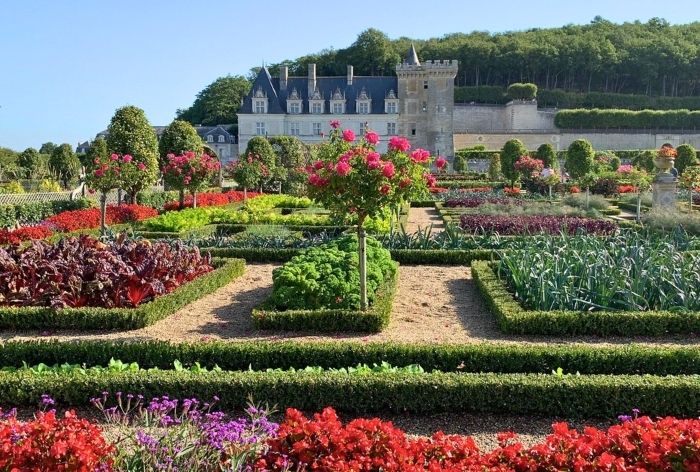
Château de Villandry
What to See at Château de Villandry
The Architecture of Château de Villandry
Château de Villandry is a great example of early French Renaissance architecture.
It was finished in the 1530s, built on the site of a much older medieval fortress. In fact, the only part of the original castle that still remains is the old stone tower or keep, which you can still see today.
The design of the château is all about balance and symmetry. The walls are made from pale, golden limestone typical of the Loire Valley, and the large windows and clean lines reflect the influence of Italian Renaissance style, which was just starting to catch on in France at the time.
It doesn’t have a lot of over-the-top decoration like some later castles—its beauty comes from its elegant, orderly design.
The layout forms a U-shape, with a central main building and two wings on either side. Inside, the rooms are built around a central staircase, which was actually a pretty new idea back then.

Château de Villandry
The Dining Room
The Dining Room was redesigned in the 18th century by Michel-Ange de Castellane, who owned the château from 1754 to 1782. He was originally from the Drôme region in southern France, and he brought a bit of that southern warmth into the room.
The walls are painted a soft peach color, a shade that was popular in Provence at the time and gives the space a warm, calm feel.
The floor is covered in classic black-and-white checkerboard tiles, and there’s a marble fountain in the room with a little angel statue on top. The fountain wasn’t just for decoration—it was actually used to cool the air during hot summer days. It’s a clever detail that shows how people in the 1700s were already thinking about comfort in the home.
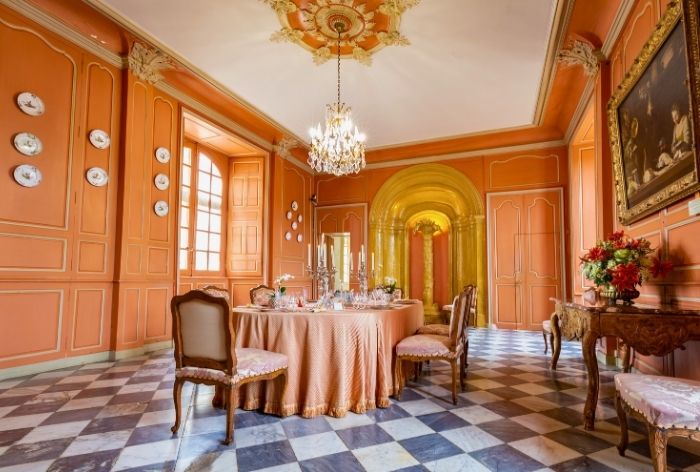
The Dining Room / What to See at Château de Villandry
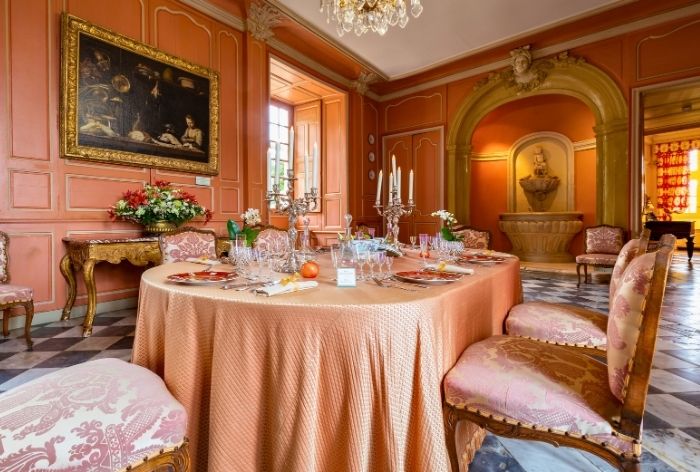
The Dining Room / What to See at Château de Villandry
In 1934, the dining room was officially listed as a Historic Monument, which helped preserve its original design. It’s one of the highlights of the château, and it will give you a real sense of how elegant and thoughtful the interiors were in the 18th century.
The Kitchen
The Kitchen is simple and practical, a clear contrast to the more decorative rooms in the château. It was used by the staff in the 18th century and is set up much like it would have been back then.
The floor is made of terracotta tiles, and the walls are bare stone, giving it a plain, working feel.
There’s a large fireplace that was used for cooking, and you can still see traditional copper pots and pans hanging on the walls.
In the middle of the room is a solid oak table, sometimes topped with baskets of vegetables—many of them grown right in Villandry’s gardens. There’s also a manual rotisserie, which gives a clear sense of how meals were prepared before modern appliances.
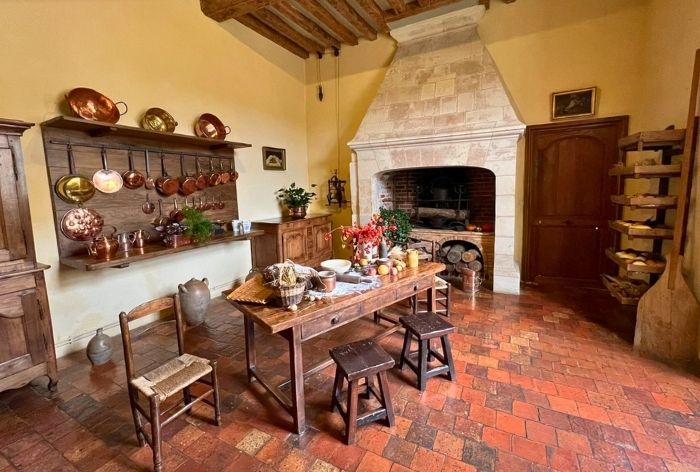
The Kitchen / What to See at Chateau de Villandry
The Main Staircase
The Main Staircase wasn’t part of the original Renaissance design. Back then, people used an external octagonal staircase in the courtyard to reach the upper floors, which was typical for that time period.
When the Marquis de Castellane took over the château in 1754, he decided to modernize the layout and had that old staircase removed. He replaced it with an internal staircase, which was more in line with 18th-century tastes.
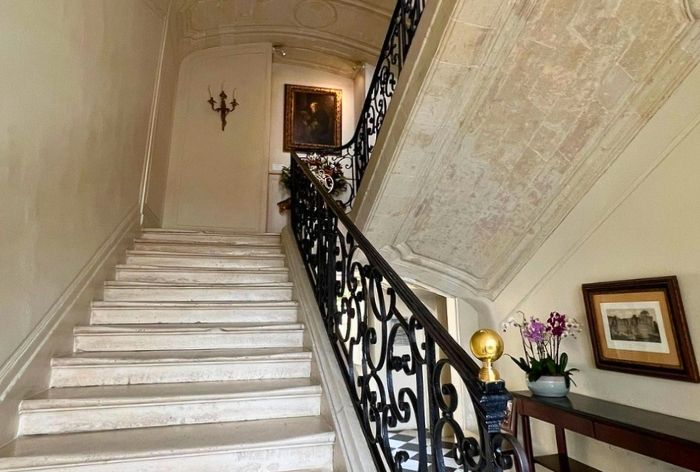
The Main Staircase / What to See at Château de Villandry
The current staircase is made from white tuffeau stone, a soft limestone found throughout the Loire Valley. The banister is made of dark wrought iron with delicate detailing.
If you look closely at the landings, you can see the interlaced initials of the Marquis, his way of marking the update as his own.
In 1934, the staircase was declared a Historic Monument, which helped ensure its preservation.
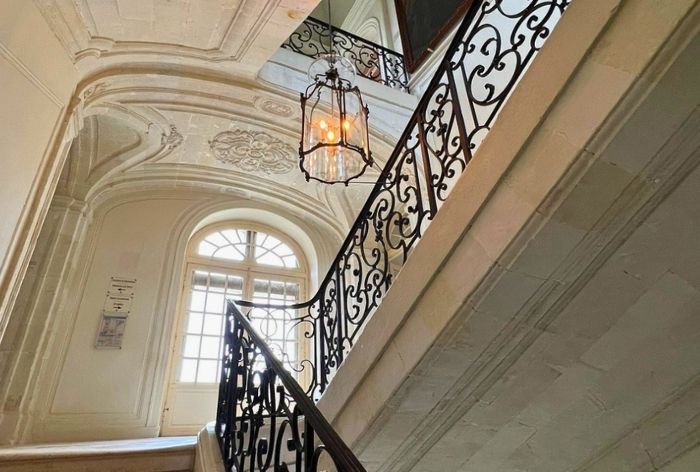
The Main Staircase / What to See at Château de Villandry
Prince Jérôme's Bedroom
Prince Jérôme’s Bedroom dates back to the early 1800s, when Napoleon I gave the property to his youngest brother, Jérôme Bonaparte.
The room was decorated in the Empire style, which was common at the time. It includes mahogany furniture and red silk fabrics, along with military-themed details that reflect Jérôme’s background.
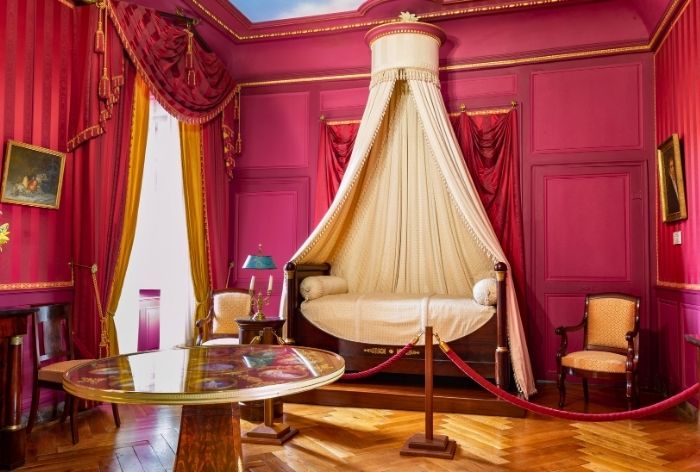
Prince Jérôme’s Bedroom / What to See at Château de Villandry
One of the most interesting pieces in the room is a pedestal table made by Jacob-Desmalter, a well-known cabinetmaker during Napoleon’s reign. The table is decorated with Sèvres porcelain medallions and was originally commissioned by Prince Jérôme himself. It left the château at some point but was later bought back by the current owners.
Jérôme only owned Villandry for a few years, but this room remains as a reminder of that period and the style of the early 19th century.
Joachim Carvallo's Bedroom
Joachim Carvallo’s Bedroom is simple and practical, just like the man himself. He bought the château in 1906 and spent the rest of his life restoring it, especially the gardens.
The room has a clear view of the Ornamental Garden and the Kitchen Garden, both of which Carvallo helped bring back to life using old plans and research.

Joachim Carvallo’s Bedroom / What to See at Château de Villandry
The Moat Bedroom
The Moat Bedroom was used by Ann Coleman, the wife of Joachim Carvallo. It is named for its location overlooking the château’s moat.
The room was redesigned in the 18th century and has green paneled walls and white silk fabric printed with flowers and birds. This decorative style was common in that period and ties in with the natural setting around the château.
Inside the room, there are portraits of Ann Coleman and two of their children. These were painted by Milcendeau, a friend of the family and a well-known artist at the time.

The Moat Room / What to See at Château de Villandry
The room was part of Ann’s personal space in the château, and the design reflects the roles she played as both a mother and a partner in the restoration work her husband led.
The Oriental Drawing Room
The Oriental Drawing Room is known for its ceiling, which didn’t originally belong to the château. It comes from a 15th-century palace in Toledo, Spain, specifically the Maqueda ducal palace. When that palace was dismantled in 1905, Joachim Carvallo managed to buy one of its four carved wooden ceilings. This particular one came from a room called “La Martina.” The other three ceilings ended up in museums in Madrid, London, and San Francisco.

The Oriental Drawing Room / What to See at Château de Villandry
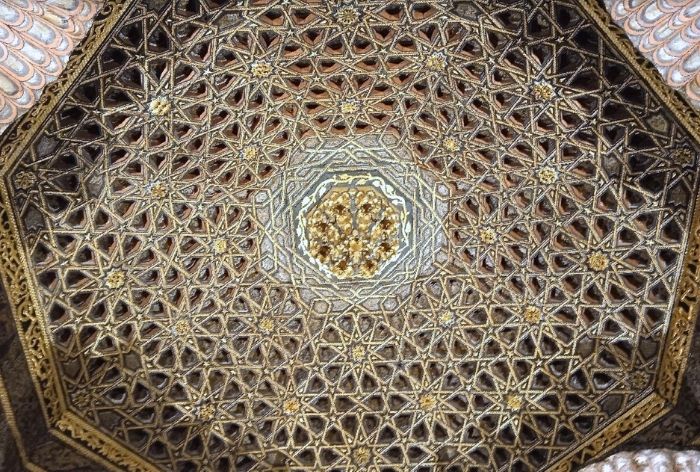
The Oriental Drawing Room / What to See at Château de Villandry
The ceiling was made in the Mudéjar style by Moorish craftsmen. It mixes Christian and Islamic design elements. You can see Franciscan cords, scallop shells, Arabic calligraphy, and floral patterns, along with royal coats of arms. There are over 3,600 pieces in the ceiling, and it took a full year to put it all back together once it arrived at Villandry.
Under the ceiling, there are four paintings that show scenes from an “Ottoman gateway.” These paintings belonged to the Marquis de Castellane, who was once the French ambassador to the Ottoman Empire during the reign of Louis XV. He likely brought them to Villandry in the mid-1700s.
The Children's Rooms
Tucked up on the upper floor of Château de Villandry are the children’s rooms.
These rooms feel more personal than the rest of the château. They remind you that Villandry wasn’t just a statement of wealth or style. It was a real home, brought back to life by Joachim Carvallo and Ann Coleman in the early 20th century.
Walking through the children’s rooms, you get a glimpse of the quieter, everyday moments that once filled this grand place.

The Children’s Rooms / What to See at Château de Villandry

The Children’s Rooms / What to See at Château de Villandry
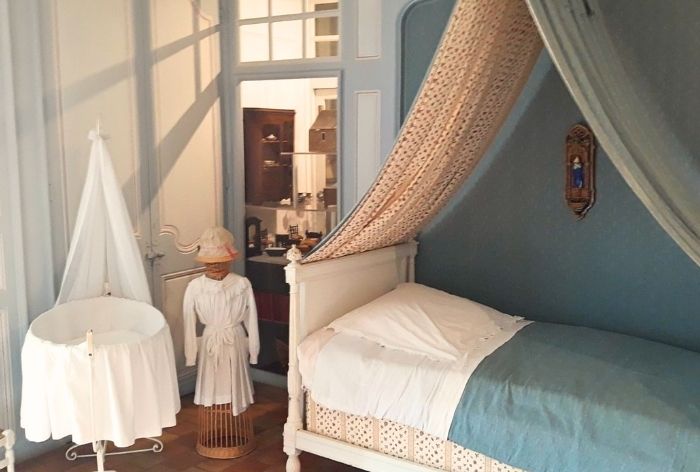
The Children’s Rooms / What to See at Château de Villandry
The ``Potager`` Bedroom
The Potager Bedroom is named for its view over the Kitchen Garden, one of the château’s most famous features. The connection between the room and the garden is easy to spot; floral designs appear throughout the room, from the fabric on the bed and curtains to the wall panels.
The floor is original 18th-century parquet, laid out in a geometric pattern that reflects the shapes of the garden plots outside.
Behind a set of discreet doors, there’s a small dressing room and a powder room, both part of the original layout. The room was first decorated in shades of red and pink, but it was restored in 2019 with blue tones that better match the peaceful feel of the space today.
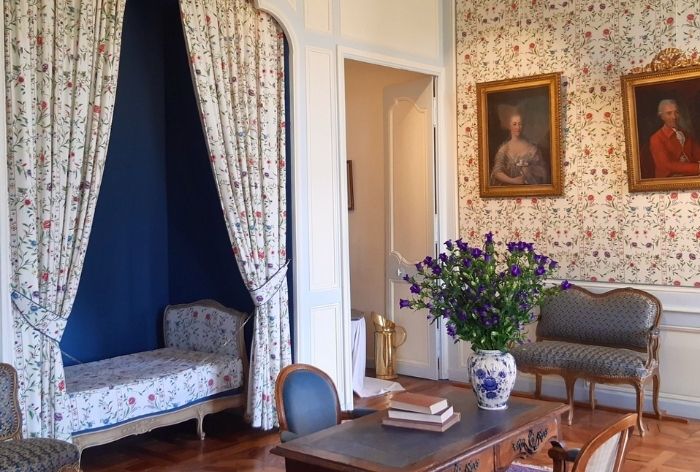
The “Potager” Bedroom / What to See at Château de Villandry
The Keep
The Keep is the oldest part of Château de Villandry. It dates back to the 12th century, when the site was still known as Colombiers. In 1189, an important meeting took place here. King Henry II of England and King Philip II of France signed the Peace of Colombiers right in this very spot.
When Jean Le Breton bought the property in the 1500s, most of the old fortress was taken down so he could build the Renaissance-style château that stands today. But the Keep was left in place and built into the new design. It’s the only part of the medieval castle that still survives.
Inside, you’ll find the original stone spiral staircase. You can climb to the top for a clear view of the gardens and the surrounding area.
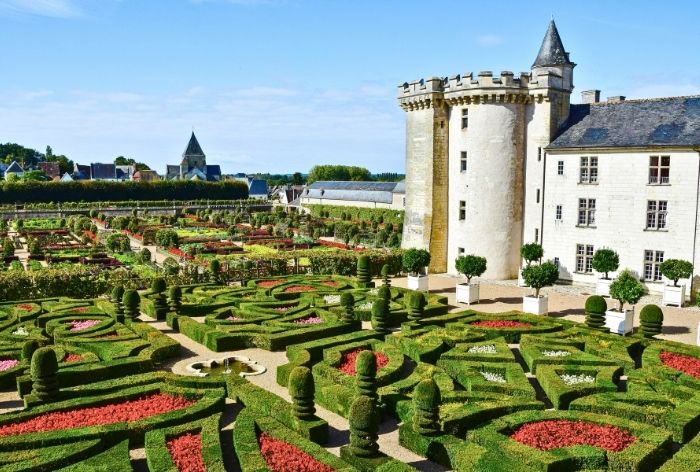
The Keep / What to See at Château de Villandry
The Francis I Room
The Francis I Room was created in 2015 to mark 500 years since Francis I became king. It’s located inside the Keep, the oldest part of the château, and serves as a tribute to the king’s visit to Villandry in 1536.
The room features a collection of objects from the Renaissance period, chosen to reflect the time when Francis I ruled. One of the most striking pieces is a large tapestry showing the famous 1520 meeting between Francis I and Henry VIII, known as the Field of the Cloth of Gold.
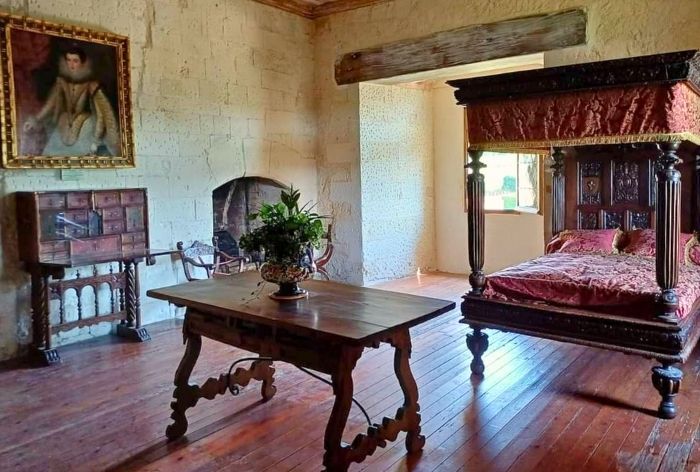
The Francis I Room / What to See at Château de Villandry
The Gardens
The gardens at Château de Villandry are known for their precise layout and historical design.
Joachim Carvallo and his wife Ann Coleman restored the gardens based on traditional Renaissance styles, using historical records and drawings as guides.
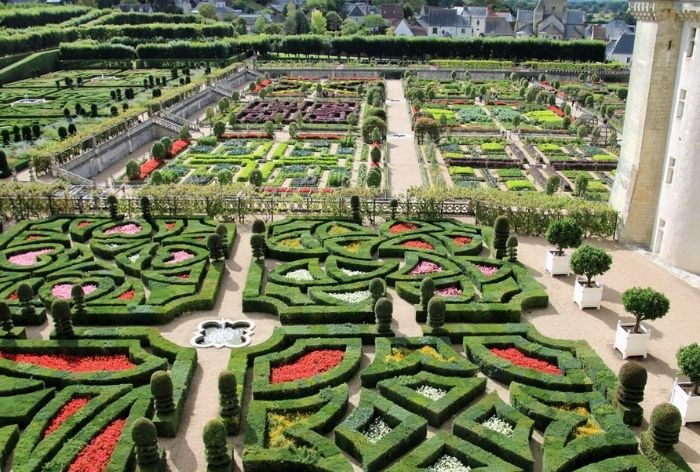
The Gardens / What to See at Château de Villandry

The Gardens / What to See at Château de Villandry
There are several main sections:
- Ornamental Garden – This garden sits right next to the château. It’s made up of low hedges trimmed into patterns, with each section representing a type of love: tender, passionate, fickle, and tragic. The shapes you see, hearts, swirls, and crosses, are all designed to reflect these themes.
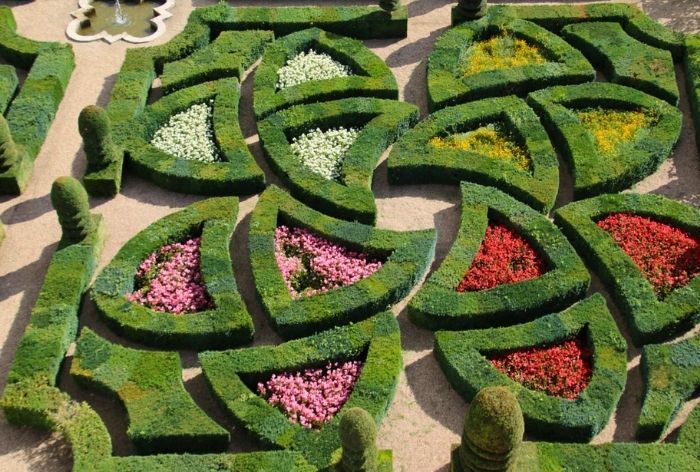
The Ornamental Garden / What to See at Château de Villandry
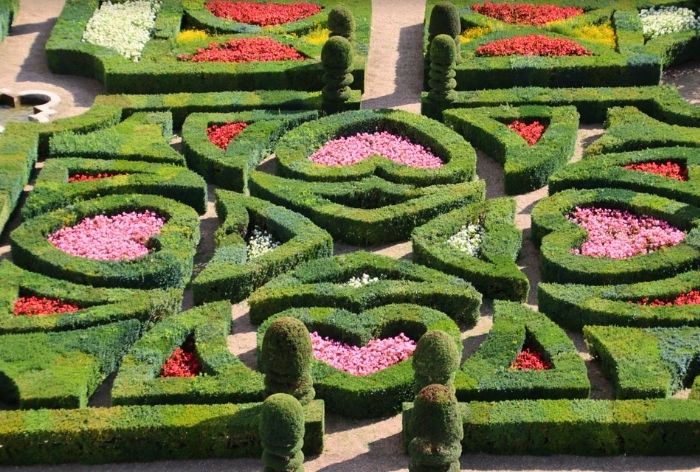
The Ornamental Garden / What to See at Château de Villandry
- Kitchen Garden – This one is both decorative and useful. It has nine squares of vegetables and flowers arranged in colorful patterns. Carrots, leeks, cabbages, and marigolds are planted in a way that’s as much about design as it is about harvest.

The Kitchen Garden / What to See at Château de Villandry
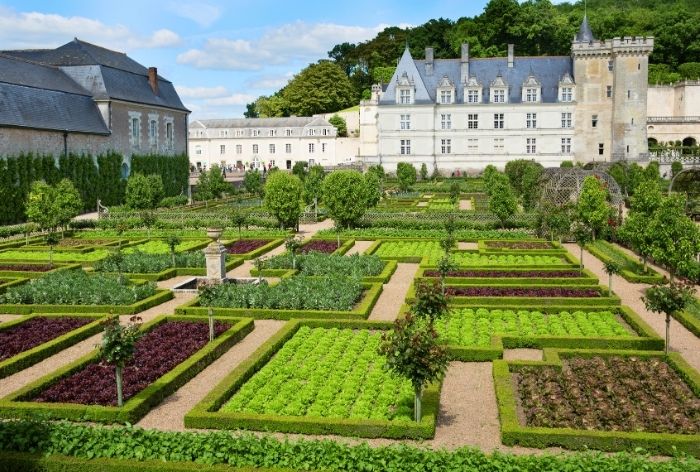
The Kitchen Garden / What to See at Château de Villandry
- Water Garden – Shaped like a large mirror, the pond in this area is surrounded by grass and trees. The design focuses on calm and symmetry. Water from a nearby canal helps fill the pond and run the fountains.
Practical Tips for Visiting Château de Villandry
Getting to Château de Villandry
Getting to Château de Villandry is pretty simple, no matter how you’re traveling. The château is well-connected and easy to reach from nearby towns and major cities.
If you’re coming by train, your best option is to head to Tours, which has regular connections from places like Paris (a little over an hour) and Bordeaux (about two and a half hours).
From the Tours station, you can take a taxi straight to Villandry—it takes around 20 minutes. If you prefer public transport, the ride is longer but manageable: take tram line A to Fac de Médecine, then switch to bus 32, which drops you right in the center of Villandry. From there, it’s just a short walk to the château.
Driving is also a great option, especially if you’re planning to visit other castles nearby. Villandry is easy to reach via the A10 and A85 motorways. Just follow the signs and you’ll find the château without trouble.
There’s plenty of free parking nearby, including spaces for cars, buses, and camper vans.
Tickets and Opening Times
Château de Villandry is open almost all year, and you can choose to visit just the gardens or both the château and gardens together.
The gardens are open every day, even in winter, while the château itself closes for a few weeks in January and mid-November. In peak season (April to September), opening hours run from 9 AM to 7 PM, and in the quieter months, they usually close around 5 or 5:30 PM.
Tickets for adults are €14 if you want to see both the château and gardens, or €8.50 for the gardens alone. There are discounts for teens, students, and groups, and kids under 8 get in free. You can also rent an audioguide for €4 if you want a little extra background during your visit.
Because times and prices can change a bit depending on the time of year, it’s a good idea to double-check before you go. The official website has everything you need, including current hours and booking options: chateauvillandry.fr.
Where to Eat at Château de Villandry
If you’re planning to eat while visiting Château de Villandry, you won’t have to go far. Right at the entrance, you’ll find La Doulce Terrasse, the château’s own restaurant. It’s more than just a place to grab a bite. The food here is part of the experience.
The menu changes with the seasons, and many of the ingredients come straight from Villandry’s own kitchen garden. That means lots of fresh vegetables, local flavors, and dishes that really reflect the Loire Valley. Whether you’re after something filling like a main dish, something light like a tartine or salad, or just want to try one of their unique desserts, you’ll find plenty to enjoy. They even offer local wines to go with your meal.
If you’re visiting on a warm day, try one of their ice creams—flavored with fruit and flowers from the garden. They’re not your average ice creams and they’re perfect for cooling off.
If you’re in a hurry or prefer a picnic, they’ve thought of that too. The kiosk near the restaurant sells sandwiches, crepes, and drinks you can take with you and enjoy in the gardens.
How Much Time Is Needed
If you’re wondering how much time you’ll need to see everything at Château de Villandry, here’s a realistic breakdown.
Most people spend about 1.5 hours in the gardens alone. They’re big and beautifully laid out in different sections, like the ornamental gardens, the water garden, and the famous kitchen garden. If you want to take your time walking through each one, especially if you’re into photography or gardening, you might need closer to two hours just for the outdoor spaces.
Inside the château, a self-guided visit usually takes about an hour to an hour and a half. That gives you enough time to go through the main rooms, check out the furnishings, and get a feel for the place without rushing.
So, if you plan to do both the château and the gardens, set aside at least 2.5 to 3 hours. That’s a comfortable amount of time to see everything at a relaxed pace, maybe stop for a bite at the on-site restaurant, and not feel rushed.
If you’re short on time, you could see just the gardens in a little over an hour and still have a good visit.
Here Are Some More Ideas of Places to Visit in France:
How to Visit Fontainebleau on a Day Trip from Paris (13 Best Things You Can’t Miss)
13 Tips for First Visit to Rouen to Help You Explore the City
DIY Walking Tour of Rouen (17 Best Stops, Map and Tips)
What to See at Château de Chaumont-sur-Loire (12 Things You Can’t Miss + Useful Tips)
What to See at Château d’Azay-le-Rideau (12 Things You Can’t Miss + Practical Tips for Your Visit)
How to Spend 6 Days in the Loire Valley (Detailed Itinerary + Practical Travel Tips)
7 Must-See Châteaux in the Loire Valley for First-Time Visitors (What to See + Practical Tips)
Perfect One Day in Étretat (5 Top Things You Can’t Miss + Practical Tips)
Did You Find It Useful? Why Not Save What to See at Château de Villandry to Pinterest!


Now, It Is Your Turn, I Would Like to Hear Back from You!
Are you planning your trip to France?
Please let me know! Drop me a quick comment right below!
Click on any of the images below to get inspired and to help you with the planning process for your trip to France!
